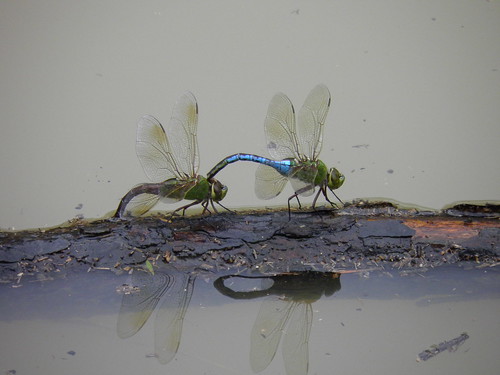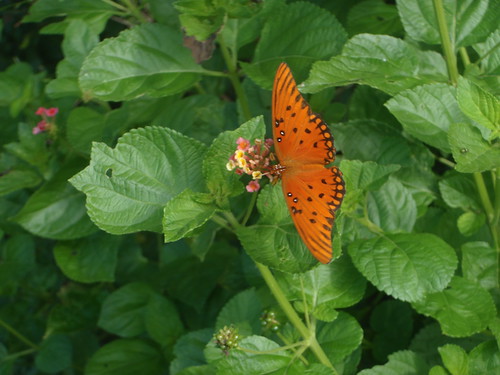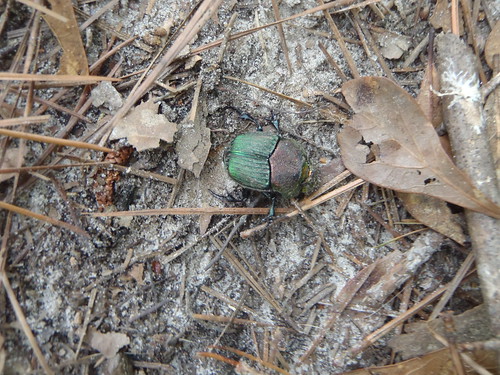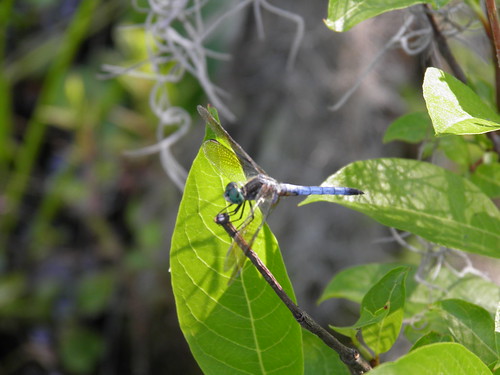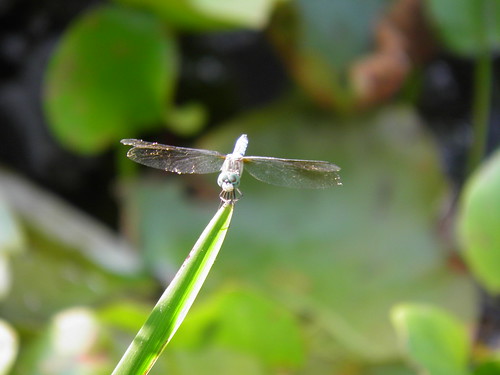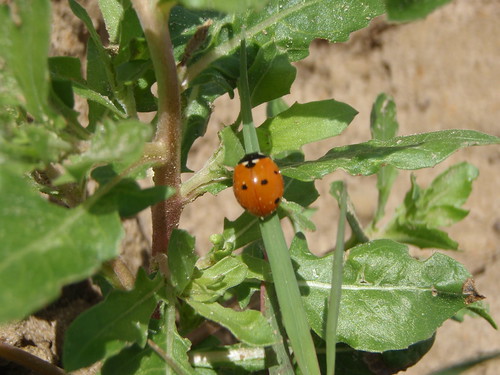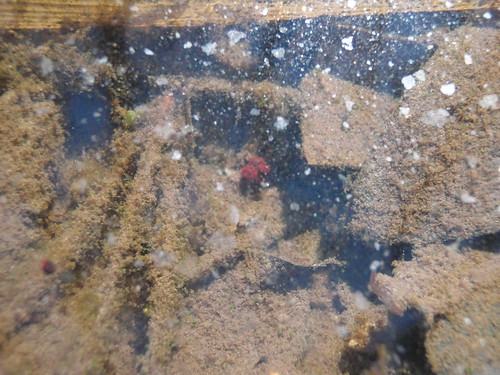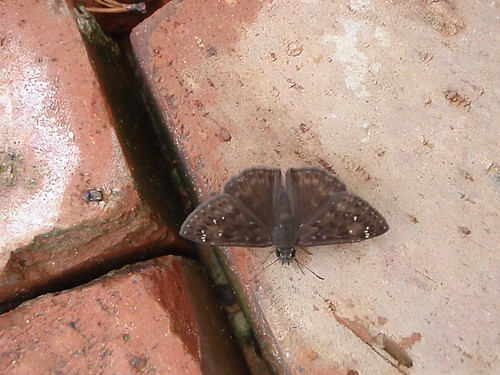Here they go: Continue reading
Category Archives: Insects
Butterfly on Lantana
Update: Jane Osborn has identified this as a Gulf Fritillary, Agraulis vanillae.
Pictures by John S. Quarterman, Lowndes County, Georgia, 21 June 2010.
Dung Beetle
Had only one goal: Continue reading
Skeeter hawk
Ladybug: Natural pest control
Here’s a movie: Continue reading
What are these red things swimming in the pond water?
Mutant Pigweed vs. Glysophate-Resistant Corn, Soybeans, and Cotton
 It’s a funny thing about monocultures. They’re highly vulnerable to anything
that affects that particular variety.
Dr. Mae-Wan Ho writes:
It’s a funny thing about monocultures. They’re highly vulnerable to anything
that affects that particular variety.
Dr. Mae-Wan Ho writes:
The scene is set at harvest time in Arkansas October 2009. Grim-faced farmers and scientists speak from fields infested with giant pigweed plants that can withstand as much glyphosate herbicide as you can afford to douse on them. One farmer spent US$0.5 million in three months trying to clear the monster weeds in vain; they stop combine harvesters and break hand tools. Already, an estimated one million acres of soybean and cotton crops in Arkansas have become infested.The palmer amaranth or palmer pigweed is the most dreaded weed. It can grow 7-8 feet tall, withstand withering heat and prolonged droughts, produce thousands of seeds and has a root system that drains nutrients away from crops. If left unchecked, it would take over a field in a year.
Meanwhile in North Carolina Perquimans County, farmer and extension worker Paul Smith has just found the offending weed in his field [3], and he too, will have to hire a migrant crew to remove the weed by hand.
Here’s the good news: Continue reading
Glysophate (Monsanto’s RoundUp) Causes Birth Defects: Argentine Scientist
 According to
Americas Program Report:
According to
Americas Program Report:
A study released by an Argentine scientist earlier this year reports that glyphosate, patented by Monsanto under the name “Round Up,” causes birth defects when applied in doses much lower than what is commonly used in soy fields.Why should Argentina care? Continue readingThe study was directed by a leading embryologist, Dr. Andres Carrasco, a professor and researcher at the University of Buenos Aires. In his office in the nation’s top medical school, Dr. Carrasco shows me the results of the study, pulling out photos of birth defects in the embryos of frog amphibians exposed to glyphosate. The frog embryos grown in petri dishes in the photos looked like something from a futuristic horror film, creatures with visible defects—one eye the size of the head, spinal cord deformations, and kidneys that are not fully developed.
“We injected the amphibian embryo cells with glyphosate diluted to a concentration 1,500 times [less] than what is used commercially and we allowed the amphibians to grow in strictly controlled conditions.” Dr. Carrasco reports that the embryos survived from a fertilized egg state until the tadpole stage, but developed obvious defects which would compromise their ability to live in their normal habitats.
VDT: Quarterman Road project completed
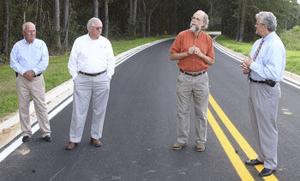 The Valdosta Daily Times caught me working on being tactful.
The Valdosta Daily Times caught me working on being tactful.
Matt Flumerfelt’s writeup actually conflates two different county commission meetings, but gets the gist right:
The fate of the tree canopies lining the rural road were thought to hang in the balance. Several residents spoke in favor of the paving, citing dangerous conditions along the road during periods of stormy weather.Oh, the beaver will be mad. I forgot to mention the beaver.John and Gretchen Quarterman, whose ancestors lent their name to the country lane, led the fight to preserve the road in its original pristine dirt-road condition.
The forest along Quarterman Road is “a scrap of the longleaf fire forest that used to grow from southern Virginia to eastern Texas,” said John Quarterman following the ribbon-cutting ceremony. “This forest has been here since the last ice age.”
Quarterman Road, pre-paving, was the kind of dirt road down which Huckleberry Finn might be envisioned skipping barefoot with a fishing rod projecting over one shoulder.
It was the kind of road near which Thoreau might have planted a cabin.
“Many people don’t know that a longleaf pine forest has more species diversity than anything outside a tropical rain forest,” Quarterman said. “In our woods, we have five species of blueberries, …
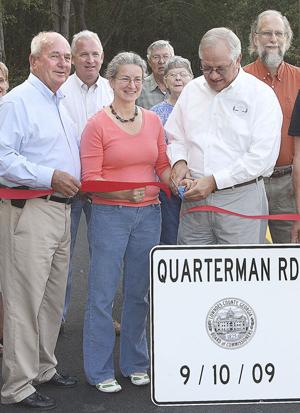 The rest of the story is on the VDT web pages.
More pictures of the event in the previous blog entry.
The rest of the story is on the VDT web pages.
More pictures of the event in the previous blog entry.
For pictures of what lives in the forest, see longleaf burning gopher tortoises, snakes, frogs, bees and butterflies, spiders and scorpion, and raccoon, and beautyberry, pokeberry, passion flower, pond lily, ginger lily, Treat’s rain lily (native only to south Georgia, north Florida, and a bit of Alabama), thistle, sycamore, palmetto, mushrooms, lantana, magnolia, grapes, yellow jessamine, dogwood, and native wild azaleas.
The VDT has a good picture of Gretchen cutting the ribbon.
But it’s not over just because one road project is completed:
“More people around the county seem to be paying attention these days. Commissioners tell us that already another road in the county has had its canopy saved during paving, and the commission has promised residents of Coppage Road that if their road is paved, their canopy will be saved. Commissioners even seem to like the idea of recognizing canopy roads as a feature of quality of life for residents of the county and for visitors.”
We have a forest. The county just has roads.
Now let’s go see what they’re doing to the rest of our roads. And schools, and waste management, and biofuels, and industry…. If you’d like to help, please contact the Lowndes Area Knowledge Exchange.
